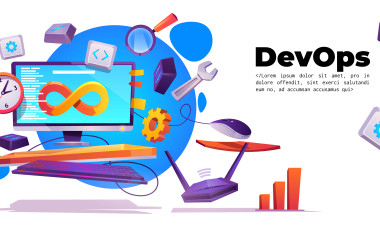Seven Stages of Agile Transformation Journey
The concept of agile methodology is catching fire. This methodology enables teams to attain the targets faster in a swiftly changing and unforeseeable environment. The most valued benefits of the agile methodology include faster time to market, enhanced flexibility, and a well-ordered partnership preventing project-running errors. Employees working with more autonomy and independence make organizations embrace changes. It enhances coordination and accord among product owners, scrum masters, and development teams.
However, incorporating the methodology is challenging. Over the years, organizations trying to introduce this methodology have run into rough weather in the form of missing serious deadlines, slow product development, loss of team members, including highly skilled talents, and squabbling among teams. Companies often attempt to implement the results in chaos while grossly failing to achieve desired results.
The research outcomes reveal that three key issues thwart a successful implementation of agile methodology. These include assigning only high-performing employees for such initiatives, which have a counter effect on other vital efforts the company takes along with agile projects—insulating agile teams from the main business results in faults that weaken the project. The practice of engaging all agile team members in a full-time capacity becomes unworkable in reality.
Hence, while opting for implementing agile transformation strategy, companies must follow specific steps to ensure successful outcomes such as:
Agile Transformation Steps
- Securing support from the top management,
- Agile coaching by appointing coaches to build awareness on different agile frameworks
- Introducing Agile Tooling Stack for seamless communication and collaboration among distributed agile teams,
- Building an Agile Transformation roadmap to make sure the transformation is successful,
- Espousing product mindset over the project mindset,
- Following the 'Test and Learn method' to see how the process has turned out to be,
- Validating the agile status to understand whether the company has transformed or is 'Agile in Name Only.
Introduction
Agile methodology has become the watchword across organizations ever since it came in being in 2002. As a concept, agile methodology improves how people collaborate. It enables team members to attain the targets faster in a swiftly changing and unforeseeable environment. The marks of an agile company are - velocity and adaptability with stability and efficiency[1].
Traditionally companies are built on static, siloed, and structural hierarchies [2]. Contrarily agile organizations are benchmarked as a group of teams functioning in brisk learning and decision-making patterns. While the governing body remains at the top of the totem pole in these organizations, decision-making rights trickle down the pyramid; in the agile ones, there is a universal purpose and adoption of new data giving decision-making rights to teams closest to the information.
However, one cannot gainsay that incorporating the methodology is challenging and often attempts to implement the results in chaos while grossly failing to achieve desired results[3]. Over the years, organizations trying to introduce this methodology have run into rough weather in the form of missing serious deadlines, slow product development, loss of team members, including highly skilled talents, and squabbling among teams. Moreover, business leaders across the globe also agree that rolling out agile transformations on a larger scale is always more challenging than implementing them in small-scale projects.
In the recent past, industry giants have conducted research to identify unforeseen barriers in the methodology that impair well-designed and robust agile initiatives. The research outcomes reveal that conventional framing, staffing, and execution of agile projects are often unproductive in company-wide initiatives.
Where Agile Efforts Go Wrong
While launching crucial strategic initiatives, companies are prone to three critical mistakes that weaken the agile teams from the very beginning.
First, organizations solely include high-performing employees for such initiatives, which have a counter effect on other vital efforts the company takes along with agile projects. Star performers are always caught in a network of myriad responsibilities and can hardly dissociate totally from different roles, even if they are assigned exclusively to an agile project. As an expected consequence, the star members end up monitoring ten other programs at once, which stretches them too thin to deliver their best[4].
Second, organizations often sequester those teams executing agile projects from the central business to shield them from being stained by status quo thinking. However, segregation results in faults that weaken the project. While such teams need a certain amount of autonomy to avoid undue inspection and interference, complete seclusion harms the desired goals.
It is important to remember that new initiatives have hidden challenges. It is unrealistic to think agile teams will possess all the necessary skills to build and accomplish a new project. To better understand challenges, fine distinctions regarding diverse geographies or clients, and presage hastily changing competitive landscapes, it is imperative to rope in expertise from across verticals.
Third, the practice of engaging all agile team members in a full-time capacity is highly flawed. While this is done out of the rationale that complete commitment is indispensable for maintaining a laser-like focus on key goals, in reality, it becomes unworkable. Industry leaders feel involving high-profile experts whose opinions are significant, on a need and time basis, is far wiser a move for companies rolling out agile transformations on a large scale.
Difference between agile adoption and agile transformation
There exists a general confusion between agile adoption and agile transformation. Beyond apparent similarity, these processes are entirely different in intent and function. The first one connotes adopting an agile framework such as the agile scrum and embracing an array of agile practices facilitating process change and improvement. Contrarily agile transformation is a holistic change that embraces an agile mindset and processes imperative to accomplish a project [5]. While agile adoption takes about a week to implement, agile transformation strategy can take months, even years, to achieve. Also, in the former case, the organization structure remains unchanged, while the latter organizational structure gets duly rewired. In this context, it is relevant to say that a distinct difference exists between digital transformation and agile transformation.
Key benefits of agile transformation
Some of the most effective benefits of agile transformation that boosts organizational growth are:
- Faster time to market
- Enhanced flexibility in product delivery
- Ensuring a well-ordered partnership between development and testing, it prevents project-running errors.
- Enables employees to work with more autonomy and independence, which contributes to building a healthy organizational culture.
- The methodology also makes organizations skilled in embracing changes without upsetting the product development cycle.
- Another highly valued benefit is the coordination and accord among product owners, scrum masters, and development teams.
7 Stages of the Agile Transformation Journey
Here are some aspects of the agile journey that one needs to be aware of:
- A critical prerequisite for Agile Transformation is support from the top management. The senior-most executives must be on board and be mindful of the plans and strategies[7]. Embracing an agile mindset and understanding roles and responsibilities at all levels is also vital.
- Start agile coaching by appointing coaches to build awareness on different agile frameworks such as scrum, kanban, feature-driven development, crystal, and the like.
- Introduce Agile Tooling Stack for seamless communication and collaboration among distributed agile teams. Remote stack products that highly facilitate agile transformation are:
- Slack, Microsoft Teams, Skype for Short-term Communication
- Zoom, Google Meet, Loom for video communication
- Google Drive, Dropbox for Large-File Sharing
- Jira, GitHub, Tuple for Developer Tools
- InVision, Figma, Marvel for Designer Collaboration Tools
- ClickUp, Trello for Work Management Tools
- Airtable, Notion for Data Management Tools
- Freehand by InVision, Miro and Mural, Basecamp for Virtual Collaboration
- Build an Agile Transformation strategy roadmap. Envisioning a roadmap before initiating the process will help identify goals, objectives, and corresponding milestones[6] and ensure the success of the agile transformation. Key elements of the agile transformation roadmap are -
- Establishing the Vision
- Finalising the timelines by laying down milestones and deadlines
- Developing the Cross-Functional Setup
- Delineating objectives and key outcomes
- The next step will be espousing the product mindset over the project mindset. According to Gartner's study, more and more organisations are moving towards the product-centric model that prioritises continuous integration and delivery. A product mindset means that the agile team keeps maintaining and delivering value for the long term.
- Then comes the Test and Learn method. This phase involves seeing how the process has turned out to be. Companies recognise barriers and other shortcomings in this phase and revise the agile transformation strategy for better outcomes.
- Validating the agile status is the last step. It is necessary to understand whether the company has changed or is 'Agile in Name Only. A name only transformed company means there will not be any ongoing communication with the end-users while passing through product creation[8]. Moreover, there will be no feedback, product requirements will not be precise at any step, and traditional development approaches will still be widespread. In such cases, companies must rewire their agile transformation strategy or seek agile transformation consulting to implement valuable and realistic changes. It is imperative to pivot the Agile Transformation Strategy on the organization's value system and its customers [9].
By changing the way companies operate, agile transformation staretgy promote sustainability and growth. Also, one of the prime objectives of such adaptations is to replace traditional operation models and put in place a modern approach allowing organizations to be receptive towards change. Also, an all-inclusive transformation impacts each level of the organization, including people, process, strategy, structure, and technology. Moreover, it is now highly pertinent to note that in the post-Covid-19 world, agility will become a determining factor for business success and growth. Hence implementing this methodology is fast becoming the sine qua non for organizations across the globe.
Do you want to discuss the agile transformation strategies to improve user engagement on your platform? Our team will help you to improve the Digital Engagement on your platform.
Sources:
[1],[2] -The journey to an agile organization
[3] [4] - For an Agile Transformation, Choose the Right People
[5] [6] [8]-The Six-Step Journey to Agile Transformation
[7] [9] - Agile Transformation: The Guide to Getting Started



